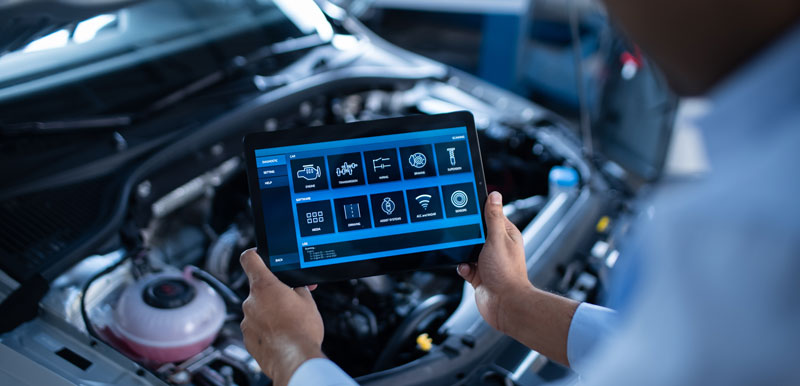
Re-routing to avoid potential automotive software hazards
- 4 minute read
-
Author: Mobica
Traditionally, vehicle manufacturers differentiated their products through mechanical traits - greater horsepower, increased torque. Nowadays, automotive software solutions are what’s putting distance between a manufacturer and its competitors.
To meet consumers’ ever-growing experiential expectations, there’s an increased focus on the functionalities and features of the digital cockpit and the in-cabin experience. As such, it’s worth considering some common software challenges and hurdles that decision-makers need to be aware of.
Here, as one of the leading automotive software companies, we outline what some of these software hazards are, so you can make sure you avoid them further down the road.
 1. Balance competing investment priorities
1. Balance competing investment priorities
The first common pitfall is competing investment priorities. Let’s take the example of the rise of electric vehicles, which is a powerful market opportunity with the stats to prove it - in 2022, one in every seven passenger cars bought globally was electric1. Furthermore, the rise of EV sales shows no signs of slowing down. On the contrary, one report predicts the number of electric cars, buses, vans and heavy trucks on roads will hit 145 million by 20302.
Yet the transition to electric means new EV technologies need to be sourced, production capabilities put in place, and new EV products designed and developed. However, EV ambitions are often held back by a manufacturer’s reliance on internal combustion engines, which now come with countless liabilities, from obsolete R&D centres to unreliable supply chain contracts.
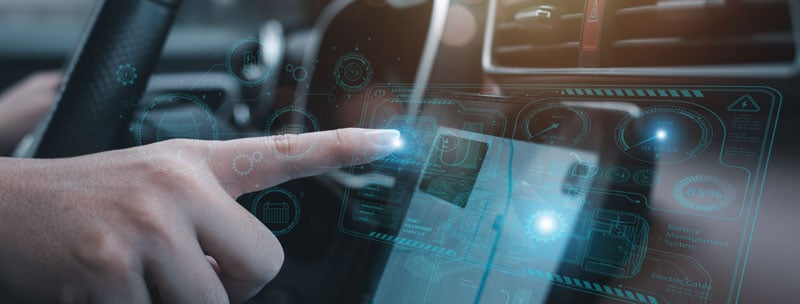
In addition, plenty of conversations around lifecycle costs for battery systems are being had, as well as the availability of resources and effective production solutions.
The move towards electric, of course, needs to be prioritised, but not completely at the expense of other transformational solutions, like automotive software. Otherwise, there’s the risk the budget for new and innovative digital experiences ends up being absorbed by other areas. Given the potential software has for creating additional revenue streams for OEMs throughout a vehicle’s lifetime, it’s crucial that decision-makers find a way to balance these competing investment priorities.
![]() 2. Embrace new ways of working
2. Embrace new ways of working
There’s no getting around the fact traditional automotive development is at odds with how modern software projects progress. The former is a fairly linear process, with consecutive stages building upon the findings of the previous one. In contrast, software development is typically developed in iterations on an ongoing basis, with proof-of-concepts and testing undertaken in parallel.
Many automotive players understand the advantages of strong software development and are taking steps to improve performance. Yet most would benefit from updating their underlying operating models for software development, considering what, where and how software is developed, as well as how it’s enabled. It’s this that will enable teams to truly embrace new ways of working.
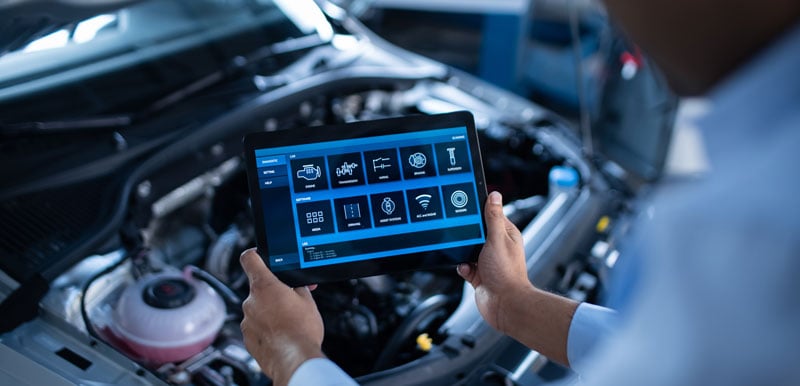
Research shows that only 40% of R&D leaders who view software as a major disruptor feel prepared to make the necessary operational shifts3. But those that don’t introduce new operating models that place software at the centre of automotive manufacturing will unfortunately see the fallout. The industry is at a tipping point, and those that embrace new ways of working will be well rewarded in the long run.
 3. Design for user experience
3. Design for user experience
When creating a digital cockpit, user experience is pivotal. Automotive UX cannot afford to be anything but user-centric and experience-focused. For instance, many prominent features seen in today’s cars - from driver drowsiness indicators and blind spot monitoring systems, to turn signal cameras and parallel park assist - have helped dramatically improve safety in a user-friendly and intuitive way.
While designing for user experience may not appear to be a hurdle, creating an intuitive interface can be more challenging than many first perceive. It requires a deep understanding of user needs, human-machine interaction, and the ability to present complex information in a clear and concise manner.
For instance, new in-vehicle entertainment services will likely require new human-machine interfaces (HMIs) to be designed. This is no easy task, especially when new concepts such as the Metaverse are taken into account. How, for instance, would VR headsets work in a car? Would the whole of the car’s interior be a screen?
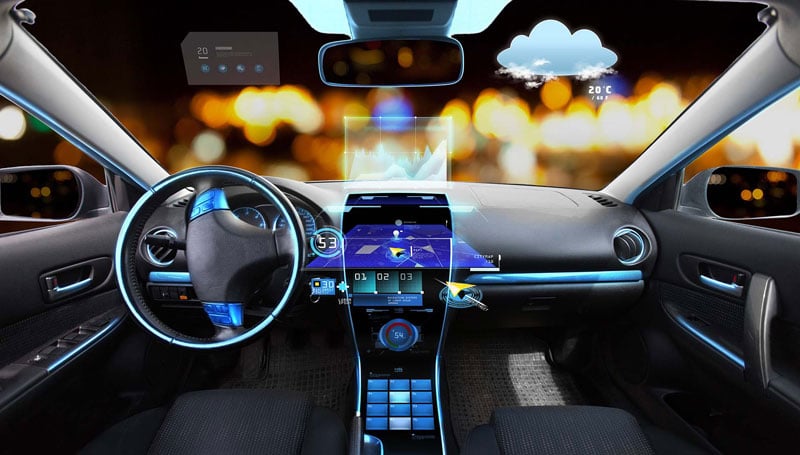
Designing for user experience can be a challenge to get right. From HMIs for head units, heads-up displays and rear seat entertainment, to creating in-vehicle infotainment applications, this can be a barrier to success. Support from a knowledgeable and experienced software specialist can help overcome this.
![]() 4. Satisfy security demands
4. Satisfy security demands
With connected cars, security by design is absolutely critical. The industry’s digital transformation has exposed new cybersecurity threats. From the takeover of safety-critical control units, to sensor spoofing, accessing infotainment systems via Bluetooth, USB or Wi-Fi, or data theft via unsecure third party software, the potential attack surface of cars has grown significantly.
To operate successfully, digital cockpits need to collect, process and store sensitive information, which includes personal and vehicle-related data. Robust security measures must be in place, covering data encryption and access control, which comply with privacy regulations.
As a result, it’s vital that decision-makers are constantly evaluating their existing security practices, building new security policies in a well-defined way, and testing for vulnerabilities. Otherwise, you run the risk of considerable security challenges further down the road.
If you’re an OEM looking to overtake the competition, then our complimentary new e-guide is for you. As well as advice on how to handle barriers and risks throughout the software development process, it discusses everything from how to take digital cockpits up a gear and what’s required to develop the next generation of in-vehicle solutions.
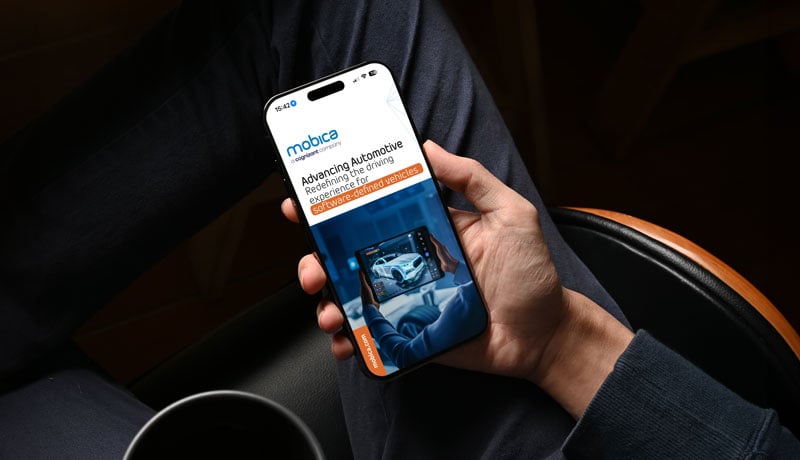 Latest Automotive E-Guide
Latest Automotive E-Guide
The transition towards the software-defined vehicle is a fascinating transformation for the sector. Learn all about the vital software considerations you need to prepare for with this new kind of driving experience.
1 International Energy Agency, ‘Electric vehicles’, https://www.iea.org/reports/electric-vehicles
2 CNBC, ‘Global electric vehicle numbers set to hit 145 million by end of the decade, IEA says’, https://www.cnbc.com/2021/04/29/global-electric-vehicle-numbers-set-to-hit-145-million-by-2030-iea-.html
3 McKinsey & Company, ‘When code is king: mastering automotive software excellence’, https://www.mckinsey.com/industries/automotive-and-assembly/our-insights/when-code-is-king-mastering-automotive-software-excellence